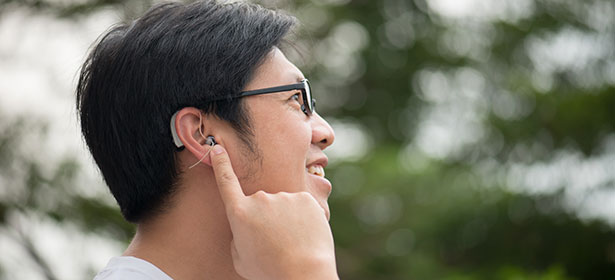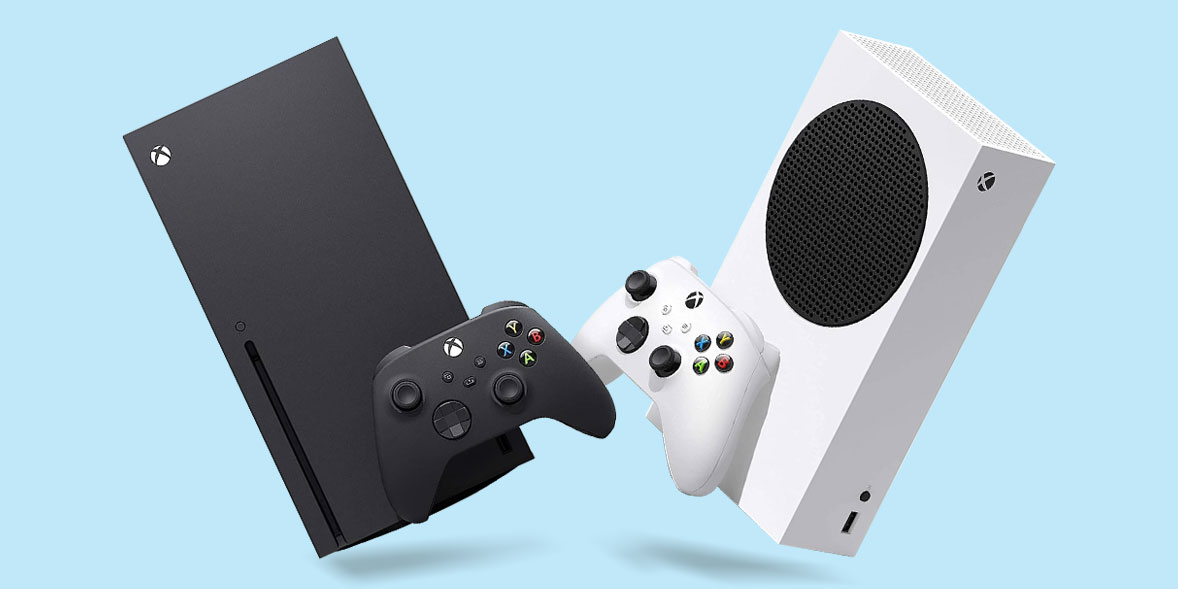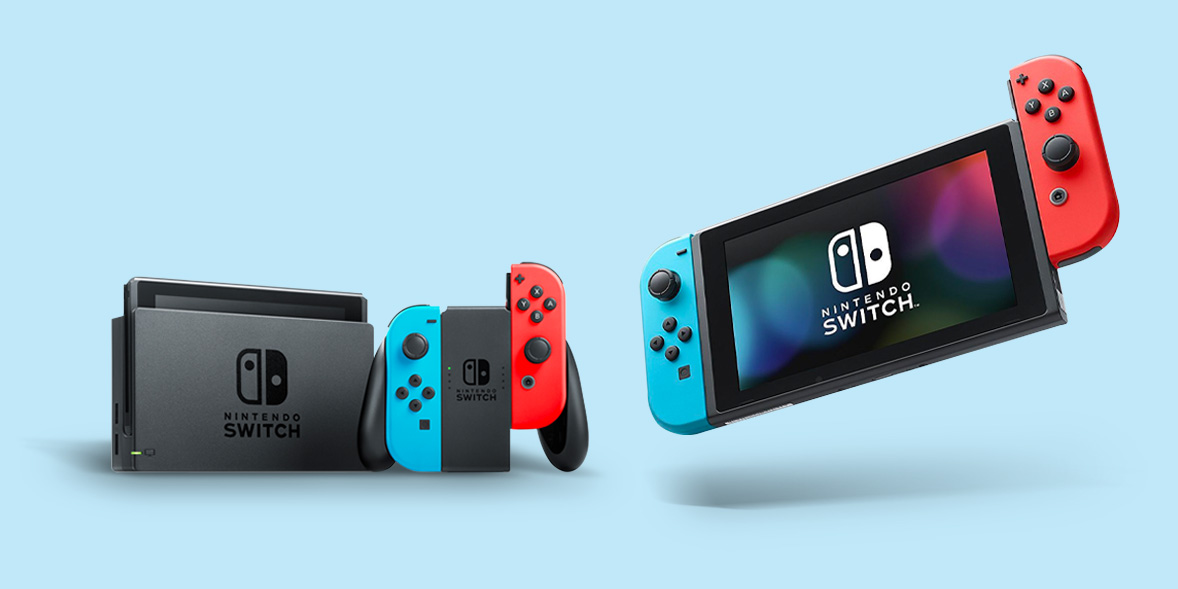
Hearing aid features explained

In this article
- Hearing aid features: what you need to know
- Basic hearing aid features
- Noise and sound management features
- Other sound management features
- Hearing aid accessories
- Telecoil (loop system): what is it and how does it work?
- Connecting your hearing aids to your phone, TV and more
- Hearing your TV and using headphones
Hearing aids all contain the essential parts – such as a microphone, amplifier, receiver (speaker) and battery (disposable or rechargeable) – but the various sound management and pairing features advertised by manufacturers can be mind-boggling.
While advanced features can sound appealing, they can also make hearing aids more expensive – and often more complicated than necessary. What you really need depends on your lifestyle and type of hearing loss.
Your audiologist should advise on the features that might suit you, based on your individual needs and level of hearing loss. They should then recommend the best brand, model and style of hearing aid for you. To help you, we've pulled together the key features and what they do.
Once you've got an idea of what you need, our guide to hearing aid prices will reveal how much you can expect to pay.
Eat well, live better and stay healthy – get our free monthly Food & Health newsletter for the latest insights delivered straight to your inbox
Hearing aid features: what you need to know

We've included a rundown of key features and what they do below. But don't be afraid to ask your audiologist or hearing-aid dispenser what a feature means, or how certain features work, if you're unsure.
Basic hearing aid features
Wireless hearing aids
Most hearing aids are wireless, but check with your audiologist, as some of the smallest hearing aids may not be.
Wireless hearing aids work together as a pair to ensure they achieve the best possible sound quality.
This means you can use a remote control to adjust your hearing aids without having to fiddle about with them.
Depending on your smartphone, you may also be able to download an app and use it like a remote control – your audiologist will be able to advise if your phone is compatible.
Depending on the brand, you can also control what the microphones on your hearing aids are doing, adjust the frequency, modify the noise reduction or set up personalised programs. Some also have the facility to ‘find your hearing aids’, so if you lose one, you can retrace your steps and find it.

Other typical hearing-aid features include:
- Automatic acclimatisation adaptation Your hearing aid monitors how you use it and learns to adjust the amplification to suit you, rather than the audiologist having to do it.
- Anti-phase feedback Detects whistling and cancels out feedback. Also called feedback management, feedback cancellation and ultra-whistle-control manager.
- Automatic gain control (AGC or compression) Provides more amplification for low sound levels, and less for high sound levels, preventing them from being intrusively loud.
- Automatic noise detection/reduction Reduces irritating background noise, such as the clinking of dishes. Also called transient noise reduction and impulse noise reduction.
- Bands or channels Most hearing aids divide the frequency range they support into bands or channels as a means of fine-tuning the hearing aid for you, making speech clearer and reducing background noise. More channels or bands can enable better tracking of your hearing loss pattern, if this is what you need. They don't necessarily mean improved sound quality, although they can give your audiologist more flexibility in fine-tuning the hearing aid for your needs.
- Frequency lowering Your hearing aids decrease higher-frequency or higher-pitched sounds to a frequency that you can hear better. This can also be done through frequency transposition and frequency compression.
- Sound softener Attacks and suppresses transient noise – especially sudden loud sounds like clinking dishes or a door slamming.
- Choice of listening programs Most digital hearing aids allow you to switch between various settings for different listening conditions, and some adjust automatically. The Telecoil setting (see below) can be added as a program.
- User-defined settings Allow you to control your hearing aids, changing the volume or switching between programs.
- Vents These are tiny tunnels in earmoulds or custom-made hearing aids that help minimise the blocked sensation you can get from wearing something in your ears. Whether they are present usually depends on how well you can hear low-frequency sounds.
- Wax guard or trap Most styles of hearing aid have one of these, unless you have an earmould. They help keep the aid free of ear wax, which can cause blockages and reduce effectiveness. They need maintenance – your audiologist will show you how to change it.
Noise and sound management features

The biggest challenge for hearing aids is to amplify the sounds you do want to hear without deafening you with unwanted background noise.
These features are designed with those issues in mind, but what you need will depend on your lifestyle and hearing needs.
Microphones
There are a few types:
- Omni-directional microphone picks up sound 180 degrees around you. If you're wearing two hearing aids, this will pick up sound all around you (ie 360 degrees).
- Directional microphone Hearing-aid manufacturers use various ways to achieve this, but essentially your hearing aid has two microphones – one facing forwards, and one backwards. In a noisy environment, the back microphone can be switched off, so that the aid picks up and amplifies sounds in front of you. This makes one-to-one conversations in a noisy place much easier.
- Adaptive microphone This uses a combination of omni-directional and directional microphones, and focuses on wherever the speech is strongest, amplifying it and reducing unwanted background noise. This is useful in a car, for example, where the people you're talking to might be behind you, or if you're in a noisy restaurant and the waiter stands beside you to talk to you.
Other sound management features

Automatic programs
Nowadays, hearing aids usually have an automatic program, so they can recognise if you're in a quiet environment or a noisy one and will switch between different microphone modes without you having to touch the aid. However, hearing aids won’t know exactly what you want to listen to, so the reduction of unwanted sound can never be perfect.
If you want a bespoke manual program you can use to control what what mode your hearing aid is in, or for more challenging listening environments that are very noisy, it's worth discussing your requirements with your audiologist.
Control gain
The audiologist can adjust the amplification of certain sounds – for example, you might want to reduce traffic noise but still be able to hear birds.
Ear-to-ear directionality
If your hearing aids are wireless, they will communicate with each other. They may also synchronise features such as directional microphones to form a single hearing system, prioritising speech and helping to reduce the need for you to adjust it manually. This is also called binaural processing.
Wind noise manager/reduction
If the wind is blowing across one hearing aid, this feature will reduce the amplification in the low frequencies automatically to reduce the wind noise, or send or enhance speech to the other hearing aid.
This more advanced hearing aid technology can be especially useful if you spend a lot of time outdoors.
Tinnitus masker/combination device
A tinnitus masker is a device worn like a hearing aid. It generates extra-low-level sound to help mask your tinnitus or reduce its perceived loudness.
Some hearing aids also have a tinnitus masker program, making them a 'combination device'. This can be set up by the audiologist.
Artificial Intelligence (AI)
Higher-end hearing aids can use AI and machine learning to adapt your hearing aid setup to your particular hearing needs, such as the usual environments you’re in, or to better make sense of what’s going on in the complicated soundscape around you, so what you hear is right for you.
AI hearing aids can also have features we’d more commonly see in smartphones, such as fitness tracking (reminding you through your aids when you need to get up and have a walk) and fall detection (automatically texting someone to let them know you need help).
Hearing aid accessories
There are more and more ways to link your hearing aids to surrounding tech and gadgets available to enhance what your hearing aids can do.
Most hearing aids are now wireless and typically have Bluetooth built in to connect your aids to devices such as smartphones and to change settings via an app.
Telecoil (loop system): what is it and how does it work?

You’ve probably spotted the sign indicating a loop system, known as Telecoil, in banks or shops. Provided it’s working and switched on, it will enable you to hear more clearly in places with lots of background noise.
You can also use Telecoil with telephones and mobile phones, but they must be hearing aid-compatible.
Most hearing aids have a Telecoil setting (although smaller ones may not), but you may need to get it activated by your audiologist first.
If you're having a custom hearing aid, it's important to ask your audiologist to have the Telecoil added, as it can't be added once the hearing aid has been made.
If your hearing aid has the feature, the program can be set to either:
- T – this is 100% Telecoil and will switch off the microphone(s) in your hearing aids. This can be useful at the theatre, for example, where you want to only hear the dialogue from the stage and not people whispering behind you.
- MT – this leaves the microphone switched on. With some hearing aids, the amount of amplification from the microphone can be adjusted to put more emphasis on hearing from the Telecoil. Having the microphone working can be useful – for example, if you want to hear sounds around you, as well as the telecoil.
Some hearing aids will enable you to have both options, but this would be as two separate programs.
Connecting your hearing aids to your phone, TV and more

There's an increasing array of options for connecting your hearing aids to other tech. These include:
Direct audio input (DAI)
This is a way for a hearing aid to connect directly to other external audio sources, such as CD players, MP3 players, mobile phones or assistive listening devices. However, it's not that widely used, as most digital hearing aids are wireless and don't need this.
It uses a 'direct input shoe’ (a small piece that connects to the bottom of the hearing aid). You can then either connect the shoe through a direct input cable or an ear-level receiver. Direct input shoes are specific to the make and model of your hearing aid. Your audiologist should be able to advise you on which one is suitable.
Connecting to your phone
Whether you have a corded or cordless home phone, mobile or smartphone, you should be able to use it with your hearing aids.
Most hearing aids have automatic phone settings. Your hearing aids will set automatically to the phone's bandwidth. This may need to be set up by the audiologist and you may also attach a magnet to your phone to activate this. Your audiologist will be able to advise you.
Landline phones
Most landline phones are hearing-aid compatible: the phone communicates with the Telecoil/loop system (see above) if your hearing aid is on the loop setting. If not, the audiologist should be able to discuss other options that work for your particular hearing aids.
Holding the phone above the microphone of the hearing aid helps you to hear the phone more clearly. On some phones you can increase the volume rather than adjusting your hearing aid, and you can choose a ring tone that is easier for you to hear.
You can buy landline phones that have increased amplification and other features that make them easier to use with hearing aids. The RNID says these are likely to cost £30 for a simpler model, up to £80 for a phone with more features.
Alternatively, you can buy telephone amplifiers to make voices louder.
Smartphones

Smartphones (and other devices such as tablets) can interact with wireless hearing aids, usually without the need for an additional assistive (listening) device. If synced, you can take phone calls, listen to music and watch videos through your hearing aids.
Some even have the capacity to talk to Siri (iPhone voice control), or your Android assistant. For example, you can tap your ear and say ‘Siri what is the capital of France’ – Siri will then respond in your hearing aid, so no one else would hear it say ‘Paris’.
Some wireless hearing aids connect directly to Bluetooth devices , including Android phones. For others you may need to use a Bluetooth interface. Your audiologist will be able to advise you on this, and on how to use your phone’s accessibility features to get the best from your hearing aids.
Streamers and neck loops
For mobile phones, as long as your hearing aids are wireless or have Bluetooth technology, you can also use a gadget that plugs into your phone and is worn round your neck, or in your pocket, although this probably won’t be necessary if you have a smartphone.
This is often called a streamer or neck loop, and it pairs your hearing aids to multiple devices, such as the TV or your mobile.
Hearing your TV and using headphones

Options for hearing your TV better range from wireless headphones that allow you to adjust your own volume without disturbing the rest of the family, through to connecting your hearing aids to the TV using Bluetooth (many newer hearing aids have this).
To hear the TV better, a soundbar can bring TV sound directly to you (TVs usually have their speakers at the back).
But adjusting your TV sound modes could be a better no-cost option - for example, choose a ‘Clear Voice’ or equivalent setting for clearer dialogue, and some TVs let you boost the treble (high frequencies) using a built-in equaliser.
You could also try headphones with active noise cancellation or specialist TV headphones, or a portable speaker such as the specially designed Sony Wireless Handy TV Speaker.
Get more tips in our full guide to hearing your TV better.
Hearing assistance features on AirPods and Samsung Galaxy buds

Apple AirPods Pro (2022) and Samsung Galaxy Buds 2, for example, both come with features that may help if you have milder hearing loss.
These include active noise cancelling (ie they monitor background noise and cancel it), and features to enhance sound (the AirPods boost conversation via the LiveListen feature). See our headphone reviews to find out more.
However, hearables aren’t designed to be worn all day as hearing aids are, and they're typically one-size-fits-all, so if you're struggling, don't put off seeing an audiologist.
Best and worst hearing aid providers - see our guide to the top-rated choices
Five tips to help you choose the right brand for you

- If you're keen on a particular brand or product, check that the hearing aid provider actually sells it before you visit. Not all retailers sell all brands.
- Don't get too hung up on the brand. Focus on choosing a good provider who can explain your needs clearly and how suggested models can meet them.
- There are instances where certain brands will better meet your requirements - for example, working best with an iOS or Android mobile phone. A good provider can help you navigate this.
- Ask your provider to explain why they recommend one brand over another and the pros and cons of each.
- A device is only as good as the way it is programmed. If you're having problems with your hearing aids, it's probably not the brand to blame. It can take perseverance to get your hearing aids working well, so don't be afraid to go back to your audiologist if you're having problems.
Franki Oliver, Audiology Adviser at the RNID, has another crucial piece of advice: 'Everyone's hearing needs are different, so this is one situation where a recommendation from a friend or family member might not suit you.'


















